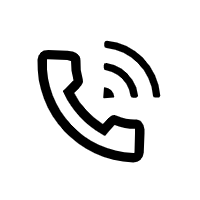When selecting an industrial valve, a correct process not only ensures stable system operation but also significantly reduces maintenance costs. This article will provide an in-depth analysis of key factors at each step, including valve type, project specifications, materials, and supplier comparisons, to help you quickly identify the most suitable industrial valve solution.
一. Understanding Common Valve Types
Before purchasing, first understand the basic characteristics and applicable scenarios of each valve type:
- Ball Valve: Excellent sealing, suitable for quick shutoff and frequent opening and closing applications.
- Gate Valve: Low opening resistance, suitable for fully open or fully closed applications.
- Butterfly Valve: Lightweight and compact, suitable for large-diameter, low-pressure systems.
- Check Valve: Automatically prevents backflow, commonly used at pump outlets and in pipe networks for backflow protection.
二. The Impact of Project Parameters on Model Selection
1. Pressure Rating Select the appropriate nominal pressure (PN) or ANSI rating based on the maximum working pressure of the process pipeline.
2. Temperature Range For high-temperature applications, heat-resistant materials (such as alloy steel and silicon carbide) are preferred; for low-temperature applications, pay attention to the brittle temperature.
3. Media Characteristics For corrosive media, choose a corrosion-resistant alloy or lined valve. For media containing solid particles, use a wear-resistant valve seat.
三.Key Points for Material and Seal Selection
- Valve Body Material Carbon steel, 304/316 stainless steel, alloy steel, etc., determined based on the media and temperature requirements;
- Seal Material PTFE is suitable for most corrosive fluids; metal seals are suitable for high temperatures and high pressures;
- Surface Treatment Spraying, galvanizing, or PTFE lining to enhance corrosion resistance and leak prevention;
四.Supplier and Service Comparison
- Product Certifications ISO 9001, API, CE, UL, and other certifications;
- Delivery and Inventory Standard parts are generally delivered in 2–4 weeks; custom parts require coordination with the supplier;
- After-Sales Support Warranty period, on-site installation guidance, and spare parts availability;
Through a comprehensive analysis of valve types, project parameters, materials, and supplier services, you have mastered the core elements of industrial valve selection. Next, download the Covna Industrial Valve Datasheet for detailed technical specifications and recommended models to help you quickly implement your project.









